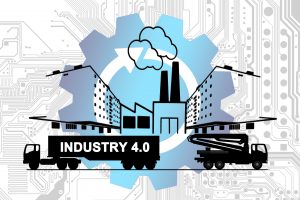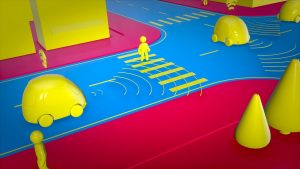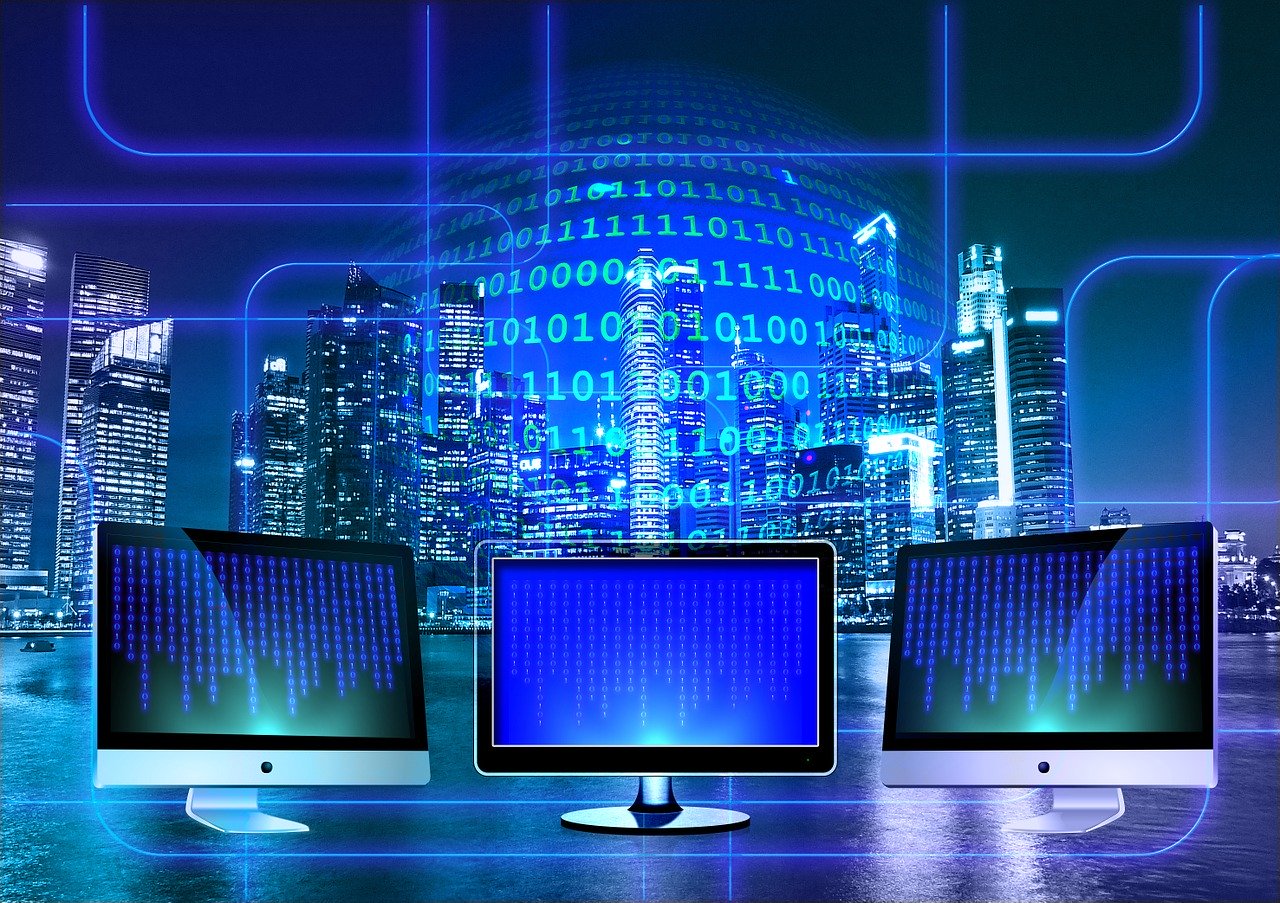Eight year old John has been dropped off at the park by his father to play under the supervision of his father’s friend, Mark. John’s father gives specific instructions to Mark on what John can and cannot do at the park. Among other things, it has instructions on where to drink water from, what all play structures he could use as per his age limit, and what all he can be allowed to eat.
After a half an hour of John playing, his friend comes with his mother to the park carrying a pizza. Like any good friend, they offer John a slice of pizza. In this scenario, either John needs to go back home to ask his father or he can ask Mark, his caretaker, as that will be faster and requires less effort. He quickly asks Mark but unfortunately due to John’s dietary restrictions, he is not allowed to eat outside food.
In this somewhat unrealistic example (given our current level of connectivity through smartphones), the data was obtained and processed locally. The decision was taken then and there, instead of it being relayed back and forth across long distances, losing time and expelling extra effort in the process. This is what edge computing does, albeit a very simplistic example.
Edge computing is a distributed paradigm that enables data to be processed locally across smart objects, mobile phones, and local networks. Instead of sending massive amounts of data generated by devices back up to the central cloud for processing (which takes more time, requires more bandwidth, and tends to cost more) data analysis can now take place on a user’s device at the edge of the network.

Fueled by emerging use cases of IoT, AR/VR, robotics, machine learning, and network functions that require service provisioning closer to users, edge computing helps solve the key challenges of bandwidth, latency, resiliency, and data sovereignty. It complements the hybrid computing model where centralized computing can be used for compute intensive workloads while edge computing helps address the requirements of workloads that require processing in near real time.
Using these technological innovations, industrial companies are beginning to drive new levels of performance and productivity. While cloud computing is a major enabler of industrial transformation, edge computing is rapidly becoming a key part of the Industrial Internet of Things (IIoT) equation to accelerate that digital transformation.
Edge computing is not a new concept, but several trends have come together recently to create an opportunity which will help industrial organizations turn massive amounts of machine-based data into actionable intelligence closer to the source.
6 Edge Computing Use Cases With A Huge Potential
Smart Cities
Urban areas are quickly becoming massive information gathering centers with sensors collecting data on traffic patterns, utility usage, air monitoring and key infrastructure on a daily basis. Utilizing high-speed network connections to the edge of the network allows the sending of CCTV, high-resolution video, and other high-quality data to a central control efficiently. Smart cities can use edge computing to facilitate real-time law enforcement as well. Things like a vehicle tag recognition app that is sitting on an edge gateway or device could quickly enable police to sift through parking lot cameras and find a certain car without transmitting significant amounts of data back and forth for each scan.

Coupling the rising number of autonomous vehicles and the ever-expanding amount of IoT devices, smart cities have the potential to transform how people live and utilize services in an urban environment. Since all edge computing use cases rely upon devices collecting data to carry out basic processing tasks, the city of the future will have the ability to react dynamically to changing conditions as they occur. There are currently major inefficiencies of energy grids and other utilities around the world. The World Bank estimates that 8.6 trillion gallons of water a year is lost through leaks in critical water infrastructure (it is enough to fill the Hoover Dam!). Performing real-time analytics at the edge will enable utility companies to compose data from millions of smart meters and provide unprecedented resolution into the real-time state of electrical grids, water systems, and other utilities. Technology advancements leading to the automation of electric utility substations will enable utility companies to better identify inefficiencies, pass on cost savings, and provide valuable insights from its customers usage habits.
Industrial Manufacturing

Perhaps no industry stands to benefit more from IoT devices and edge computing than the manufacturing sector. Through incorporation of data storage and computing into industrial equipment, manufacturers can gather data that will allow for better predictive maintenance and energy efficiency. This will allow them to reduce costs and energy consumption while maintaining better reliability as well as productive up-time. Smart manufacturing techniques informed by ongoing data collection and analysis will also help companies to customize production runs to better meet consumer demands.
One of the most critical use cases for IIoT is the safety of both employees as well as the machinery they are operating. Edge compute can provide near instantaneous alerts and/or triggers that will enable companies to intervene before there is a critical issue. Instead of waiting for processing in the cloud, problems are dealt with quickly.
Edge computing can also provide great advantages to industries operating where bandwidth is low or non-existent. An offshore oil rig, for instance, can utilize edge computing to gather, monitor, and process data on a variety of environmental factors without having to depend upon a distant data center infrastructure.
Autonomous Vehicles
By solving the proximity problem, you solve the latency problem. The on-device processing approach ensures that only non-critical data is sent over the network and that critical data can be analyzed at the source to be acted upon immediately. That is important for latency-sensitive applications, such as autonomous vehicles, where having to wait milliseconds may be untenable.
Safety is always the first concern of connected and autonomous cars. Driverless cars need to ensure that they are keeping to their lanes, recognizing and stopping at the red lights, decelerating by identifying pedestrians as well as other obstacles and much more. All this requires massive amount of sensory data computed in real-time. If the car needs to send terabytes of data to the central server and then receives the response to act, likely it will be too late.

In case of any unexpected circumstances on the road, the car needs to take crucial decisions quickly. It needs to be fast enough to respond to immediate dangers in real-time. A lag in a moving vehicle scenario is a matter of life and death. In such a scenario, edge computing can help ensure that its actions are not determined by network availability. Not only does it reduce strain on the network but it also provides significantly better reliability by reducing the latency between data processing and not needing data to be transferred to the vehicle. It can perform the needed data analytics onsite and speed up the analytics process, allowing the driver-less car to take instant action.
In scenarios like this, incurring a cost for data making a round trip to the cloud does not make sense because its too slow to provide true value to a autonomous car. Using a small, local data device is much more viable. Of course, this begs the question — how small is small, and how local is local? The smaller you go, the more local you can get, and thus you gain in round-trip times, this is the advantage that edge computing provides. The smaller you go though, the less compute power you can accommodate and compute rates will suffer. Real-time processing can be done on the vehicle, minimizing network overhead, while data that needs further analysis or permanent storage can be sent to the cloud at a later time. This is essential for autonomous vehicles, which require very fast processing speeds to interact correctly with the world around them.
Healthcare
The healthcare industry has long struggled to integrate the latest IT solutions, but edge computing offers exciting new possibilities for delivering patient care. Healthcare providers could potentially have access to critical information about their patients in real time rather than interfacing with a database across the country. All of this is made possible because of IoT devices capable of delivering and understanding vast amounts of patient-generated health data (PGHD). Medical devices themselves could also be made to gather and process data throughout the course of diagnosis or treatment whether connected to the internet or not.
Edge computing could make a significant impact on the delivery of healthcare services to hard-to-reach rural areas. Patients in these regions are often many miles from the nearest health provider and even if a healthcare professional evaluates them on-site, they may not be able to access crucial medical records. With edge computing, devices could gather, store, and deliver that information in real time to medical professionals, and even use their processing capabilities to recommend treatments.
The biggest use cases for healthcare have to do with real-time patient monitoring. If a pacemaker is malfunctioning or a glucose monitoring device is receiving troubling data from its patient, alerts need to happen instantly without the need of a network or BLE connection. Edge computing allows the device to make the decision to alert its wearer and wastes no time transmitting it to the cloud for the trouble data to be noticed.

While regulatory requirements for the sharing and disclosure of medical information would make any edge solution challenging to implement, other emerging security measures such as block-chain technology could provide new ways to address these concerns.
With Clovity’s deep focus on the Healthcare, Biotech, Healthtech and Life Science industries, its latest innovations helps reduce development times by providing an end-to-end edge to experience platform where data integration is seamless, no matter the complexity.
The CSensorNet Healthcare IoT Accelerator boasts new features include Edge Computing, Device Management, Security Encryption, Data Management, User Experience, Data Visualization, and Workflow capabilities providing critical infrastructure to support today’s IoT initiatives.
Financial Sector
Banking institutions are adopting edge computing in conjunction with smartphone apps to better target services to consumers. They’re incorporating the same principles to provide ATMs and kiosks with the ability to gather and process data, making them more responsive and allowing them to offer a broader suite of features.

For high-volume finance firms dealing in hedge funds and other markets, even a millisecond of a time lag in a trading algorithm computation can mean a substantial loss of money. Edge computing architecture allows them to place servers in data centers near stock exchanges around the world to run resource-intensive algorithms as close to the data source as possible. This provides them with the most accurate and up to date information to keep their business moving.
While virtual reality may be a more familiar term to most people, augmented reality (AR) is both more common and has more practical applications. Be it through wearable AR devices like glasses and headsets, games like Pokemon GO or Instagram filters are all using AR. Edge processing enables quick information sharing between sensors and AR headsets giving up to the second data accuracy.
Gaming Industry
The demand for immersive, mobile gaming is starting push the physical limitations of today’s super-slim devices. There’s only so much processing power you can cram into a device designed to slip into your back pocket.
With this type of processing power at the press of a button, the gaming industry continues to see a transformation in players making the move to mobile. As we evolve network access to cloud computation with 5G, we’re also moving data centers and other compute capabilities closer to gamers with the help of edge computing. Edge computing could make it possible to have a high-end console in the palm of your hand. In its simplest form, edge computing could eventually reduce the workload and battery drain on your mobile device while providing a high-end user experience. The geographic proximity and low-latency network access to a 5G connection means a significantly better mobile gaming experience without the lag.

The technology behind AR requires devices to process visual data and incorporate pre-rendered visual elements in real time. Without edge computing architecture, this visual data would need to be delivered back to centralized cloud servers where the digital elements could be added before sending it back to the device. This arrangement would inevitably result in significant latency. Edge computing allows IoT devices to composite AR displays instantly, allowing users to look anywhere to take in new AR details without having to deal with loading times.
Ready to get the Edge??
Edge Computing will change the present, past & future of IoT capabilities. Edge based IoT partnerships are all set to revolutionize data computing and will be a must for various corporate giants who are looking to leverage as well as harness the power of data analytics in developing a solution for health care, financial and other major industrial verticals.
As these edge computing use cases become more widespread, many more industries are sure to benefit from the versatility and advantages it can provide. The proliferation of localized data centers for both cloud and edge computing make it easier than ever for organizations to expand their network reach and put themselves in a position to make the most of their data resources.
By Cameron Starman, Director, Client Management @ Clovity on January 16th, 2020


